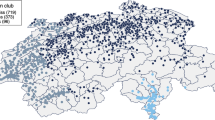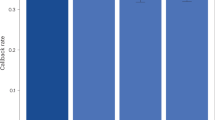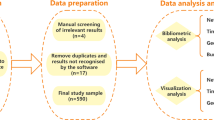Abstract
Natural field experiments investigating key labour market phenomena such as unemployment have only been used since the early 2000s. This paper reviews the literature and draws three primary conclusions that deepen our understanding of unemployment. First, the inability to monitor workers perfectly in many occupations complicates the hiring decision in a way that contributes to unemployment. Second, the inability to determine a worker’s attributes precisely at the time of hiring leads to discrimination on the basis of factors such as race, gender, age and ethnicity. This can lead to systematically high and persistent levels of unemployment for groups that face discrimination. Third, the importance of social and personal dynamics in the workplace can lead to short-term unemployment. Much of the knowledge necessary for these conclusions could only be obtained using natural field experiments due to their ability to combine randomized control with an absence of experimenter demand effects.
This is a preview of subscription content, access via your institution
Access options
Access Nature and 54 other Nature Portfolio journals
Get Nature+, our best-value online-access subscription
$29.99 / 30 days
cancel any time
Subscribe to this journal
Receive 12 digital issues and online access to articles
$119.00 per year
only $9.92 per issue
Buy this article
- Purchase on Springer Link
- Instant access to full article PDF
Prices may be subject to local taxes which are calculated during checkout
Similar content being viewed by others
References
Blakely, T. A., Collings, S. C. & Atkinson, J. Unemployment and suicide. Evidence for a causal association? J. Epidemiol. Community Health 57, 594–600 (2003).
Remmer, K. L. The political impact of economic crisis in Latin America in the 1980s. Am. Polit. Sci. Rev. 85, 777–800 (1991).
Leeper, E. M., Walker, T. B. & Yang, S. C. S. Government investment and fiscal stimulus. J. Monet. Econ. 57, 1000–1012 (2010).
Staiger, D., Stock, J. H. & Watson, M. W. The NAIRU, unemployment and monetary policy. J. Econ. Perspect. 11, 33–49 (1997).
Dornbusch, R. Expectations and exchange rate dynamics. J. Polit. Econ. 84, 1161–1176 (1976).
Long, J. B. Jr & Plosser, C. I. Real business cycles. J. Polit. Econ. 91, 39–69 (1983).
Nickell, S. Unemployment and labor market rigidities: Europe versus North America. J. Econ. Perspect. 11, 55–74 (1997).
Brown, C., Gilroy, C. & Kohen, A. The effect of the minimum wage on employment and unemployment. J. Econ. Lit.. 20, 487–528 (1982).
Oswald, A. J. The economic theory of trade unions: an introductory survey. Scand. J. Econ. 87, 160–193 (1985).
Rogerson, R., Shimer, R. & Wright, R. Search-theoretic models of the labor market: a survey. J. Econ. Lit. 43, 959–988 (2005).
Benassy, J. P. Imperfect competition, unemployment and policy. Eur. Econ. Rev. 31, 417–426 (1987).
Crépon, B. & Van den Berg, G. J. Active labor market policies. Annu. Rev. Econ. 8, 521–546 (2016).
Keynes, J. M. General Theory of Employment, Interest and Money (Atlantic Publishers & Distributors, New Delhi, 2016).
Engle, R. F., Hendry, D. F. & Richard, J. F. Exogeneity. Econometrica 51, 277–304 (1983).
MacKinlay, A. C. Event studies in economics and finance. J. Econ. Lit. 35, 13–39 (1997).
Al-Ubaydli, O. & List, J. A. in Handbook of Experimental Economic Methodology (eds Fréchette, G. R. & Schotter, A.) 420–462 (Oxford Univ. Press, New York, 2015).
Harrison, G. W. & List, J. A. Field experiments. J. Econ. Lit. 42, 1009–1055 (2004).
Akerlof, G. A. Labor contracts as partial gift exchange. Q. J. Econ. 97, 543–569 (1982).
List, J. A. & Rasul, I. Handbook of Labor Economics Vol. 4 (eds Ashenfelter, O. & Card, D.) 103–228 (Elsevier, Amsterdam, 2011).
Heckman, J. J. Causal parameters and policy analysis in economics: a twentieth century retrospective. Q. J. Econ. 115, 45–97 (2000).
Heckman, J. J. & Smith, J. A. Assessing the case for social experiments. J. Econ. Perspect. 9, 85–110 (1995).
Fréchette, G. R. & Schotter, A. Handbook of Experimental Economic Methodology (Oxford Univ. Press, New York, 2015).
Cummings, R. G., Elliott, S., Harrison, G. W. & Murphy, J. Are hypothetical referenda incentive compatible? J. Polit. Econ. 105, 609–621 (1997).
Kramer, A. D., Guillory, J. E. & Hancock, J. T. Experimental evidence of massive-scale emotional contagion through social networks. Proc. Natl Acad. Sci. USA 111, 8788–8790 (2014).
Falk, A. & Heckman, J. J. Lab experiments are a major source of knowledge in the social sciences. Science 326, 535–538 (2009).
Maniadis, Z., Tufano, F. & List, J. A. One swallow doesn’t make a summer: new evidence on anchoring effects. Am. Econ. Rev. 104, 277–90 (2014).
Levitt, S. D. & List, J. A. What do laboratory experiments measuring social preferences reveal about the real world? J. Econ. Perspect. 21, 153–174 (2007).
Pigou, A. C. Theory of Unemployment (Routledge, Abingdon, 2013).
Marshall, A. Principles of Economics (Macmillan, London, 1890).
Walras, L. Éléments d’économie Politique Pure, Ou, Théorie de la Richesse Sociale (F. Rouge, Lausanne, 1896).
Al-Ubaydli, O., List, J. A. & Price, M. K. The nature of excess: using randomized treatments to investigate price dynamics. Preprint at https://www.nber.org/papers/w16319 (2010).
Al-Ubaydli, O. & List, J. A. Handbook of Economic Field Experiments Vol. 1 (eds Banerjee, A. V. & Duflo, E.) 271–307 (Elsevier, Amsterdam, 2017).
Levitt, S. D. & List, J. A. Field experiments in economics: the past, the present, and the future. Eur. Econ. Rev. 53, 1–18 (2009).
Garraty, J. A. Unemployment in History: Economic Thought and Public Policy (Harper & Row, New York, 1978).
Smith, V. L. An experimental study of competitive market behavior. J. Polit. Econ. 70, 111–137 (1962).
Nash, J. Non-cooperative games. Ann. Math. 54, 286–295 (1951).
Ramey, V. A. Can government purchases stimulate the economy? J. Econ. Lit. 49, 673–685 (2011).
Smith, V. L. Experimental auction markets and the Walrasian hypothesis. J. Polit. Econ. 73, 387–393 (1965).
Manning, A. An integration of trade union models in a sequential bargaining framework. Econ. J. 97, 121–139 (1987).
Shapiro, C. & Stiglitz, J. E. Equilibrium unemployment as a worker discipline device. Am. Econ. Rev. 74, 433–444 (1984).
Akerlof, G. A. The market for “lemons”: quality uncertainty and the market mechanism. Q. J. Econ. 84, 235–251 (1970).
Prendergast, C. The provision of incentives in firms. J. Econ. Lit. 37, 7–63 (1999).
Sparks, R. A model of involuntary unemployment and wage rigidity: worker incentives and the threat of dismissal. J. Labor Econ. 4, 560–581 (1986).
Akerlof, G. A. & Kranton, R. E. Identity, supervision, and work groups. Am. Econ. Rev. 98, 212–17 (2008).
Greenwald, B. C. Adverse selection in the labour market. Rev. Econ. Stud. 53, 325–347 (1986).
Spence, M. Job market signaling. Q. J. Econ. 87, 281–306 (1973).
Cain, G. G. Handbook of Labor Economics Vol. 1 (eds Ashenfelter, O. C. & Layard, R.) 693–785 (Elsevier, Amsterdam, 1986).
Becker, G. S. The Theory of Discrimination (Univ. Chicago Press, Chicago, 1957).
Nagin, D. S., Rebitzer, J. B., Sanders, S. & Taylor, L. J. Monitoring, motivation, and management: the determinants of opportunistic behavior in a field experiment. Am. Econ. Rev. 92, 850–873 (2002).
Boly, A. On the incentive effects of monitoring: evidence from the lab and the field. Exp. Econ. 14, 241–253 (2011).
Holmstrom, B. & Milgrom, P. Multitask principal-agent analyses: incentive contracts, asset ownership, and job design. J. Law Econ. Organ. 7, 24–52 (1991).
Shearer, B. Piece rates, fixed wages and incentives: evidence from a field experiment. Rev. Econ. Stud. 71, 513–534 (2004).
Bandiera, O., Barankay, I. & Rasul, I. Social preferences and the response to incentives: evidence from personnel data. Q. J. Econ. 120, 917–962 (2005).
Shi, L. Incentive effect of piece-rate contracts: evidence from two small field experiments. B. E. J. Econ. Anal. Policy 10, https://doi.org/10.2202/1935-1682.2539 (2010).
Hong, F., Hossain, T., List, J. A. & Tanaka, M. Testing the theory of multitasking: evidence from a natural field experiment in Chinese factories. Int. Econ. Rev. 59, 511–536 (2018).
Al-Ubaydli, O., Andersen, S., Gneezy, U. & List, J. A. Carrots that look like sticks: toward an understanding of multitasking incentive schemes. South. Econ. J. 81, 538–561 (2015).
Benabou, R. & Tirole, J. Intrinsic and extrinsic motivation. Rev. Econ. Stud. 70, 489–520 (2003).
Bertrand, M. & Duflo, E. Handbook of Economic Field Experiments Vol. 1 (eds Banerjee, A. V. & Duflo, E.) 309–393 (Elsevier, Amsterdam, 2017).
Bertrand, M. & Mullainathan, S. Are Emily and Greg more employable than Lakisha and Jamal? Am. Econ. Rev. 94, 991–1013 (2004).
Gneezy, U., List, J. & Price, M. K. Toward an understanding of why people discriminate: evidence from a series of natural field experiments. Preprint at https://www.nber.org/papers/w17855 (2012).
Neumark, D., Bank, R. J. & Van Nort, K. D. Sex discrimination in restaurant hiring: an audit study. Q. J. Econ. 111, 915–941 (1996).
Pager, D. The mark of a criminal record. Am. J. Sociol. 108, 937–975 (2003).
Kroft, K., Lange, F. & Notowidigdo, M. J. Duration dependence and labor market conditions: evidence from a field experiment. Q. J. Econ. 128, 1123–1167 (2013).
List, J. A. The nature and extent of discrimination in the marketplace: evidence from the field. Q. J. Econ. 119, 49–89 (2004).
Blaug, M. The Methodology of Economics: Or, How Economists Explain (Cambridge Univ. Press, Cambridge, 1992).
Akerlof, G. A. & Yellen, J. L. Fairness and unemployment. Am. Econ. Rev. 78, 44–49 (1988).
Agell, J. & Lundborg, P. Theories of pay and unemployment: survey evidence from Swedish manufacturing firms. Scand. J. Econ. 97, 295–307 (1995).
List, J. A. The behavioralist meets the market: measuring social preferences and reputation effects in actual transactions. J. Polit. Econ. 114, 1–37 (2006).
Gneezy, U. & List, J. A. Putting behavioral economics to work: testing for gift exchange in labor markets using field experiments. Econometrica 74, 1365–1384 (2006).
Pritchard, R. D., Dunnette, M. D. & Gorgenson, D. O. Effects of perceptions of equity and inequity on worker performance and satisfaction. J. Appl. Psychol. 56, 75–94 (1972).
Loewenstein, G. & Schkade, D. in Well-being: The Foundations of Hedonic Psychology (eds Kahneman, D., Diener, E. & Schwarz, N.) 85–105 (Russell Sage Foundation, New York, 1999).
Lee, D. & Rupp, N. G. Retracting a gift: How does employee effort respond to wage reductions? J. Labor Econ. 25, 725–761 (2007).
Kube, S., Maréchal, M. A. & Puppe, C. Do wage cuts damage work morale? Evidence from a natural field experiment. J. Eur. Econ. Assoc. 11, 853–870 (2013).
Bellemare, C. & Shearer, B. Gift giving and worker productivity: evidence from a firm-level experiment. Games Econ. Behav. 67, 233–244 (2009).
Levitt, S. D. & Neckermann, S. What field experiments have and have not taught us about managing workers. Oxf. Rev. Econ. Policy 30, 639–657 (2014).
Fehr, E., Goette, L. & Zehnder, C. A behavioral account of the labor market: the role of fairness concerns. Annu. Rev. Econ. 1, 355–384 (2009).
Fehr, E., Kirchsteiger, G. & Riedl, A. Does fairness prevent market clearing? An experimental investigation. Q. J. Econ. 108, 437–459 (1993).
Al-Ubaydli, O. & List, J. A. Do natural field experiments afford researchers more or less control than laboratory experiments? Am. Econ. Rev. 105, 462–66 (2015).
Card, D. & Krueger, A. B. Minimum wages and employment: a case study of the fast-food industry in New Jersey and Pennsylvania. Am. Econ. Rev. 84, 772–793 (1994).
Burda, M. C. A note on firing costs and severance benefits in equilibrium unemployment. Scand. J. Econ. 94, 479–489 (1992).
Bazen, S. & Skourias, N. Is there a negative effect of minimum wages on youth employment in France? Eur. Econ. Rev. 41, 723–732 (1997).
Endo, S. K. Neither panacea, placebo, nor poison: examining the rise of anti-unemployment discrimination laws. Pace Law Rev 33, 4 (2013).
Christiano, L. J., Eichenbaum, M. & Evans, C. L. Nominal rigidities and the dynamic effects of a shock to monetary policy. J. Polit. Econ. 113, 1–45 (2005).
Duffy, J. Experimental Macroeconomics (Palgrave Macmillan, London, 2010).
Author information
Authors and Affiliations
Corresponding author
Ethics declarations
Competing interests
The authors declare no competing interests.
Additional information
Publisher’s note: Springer Nature remains neutral with regard to jurisdictional claims in published maps and institutional affiliations.
Rights and permissions
About this article
Cite this article
Al-Ubaydli, O., List, J.A. How natural field experiments have enhanced our understanding of unemployment. Nat Hum Behav 3, 33–39 (2019). https://doi.org/10.1038/s41562-018-0496-z
Received:
Accepted:
Published:
Issue Date:
DOI: https://doi.org/10.1038/s41562-018-0496-z
This article is cited by
-
Optimally generate policy-based evidence before scaling
Nature (2024)
-
Income raises human well-being indefinitely, but age consistently slashes it
Scientific Reports (2023)



